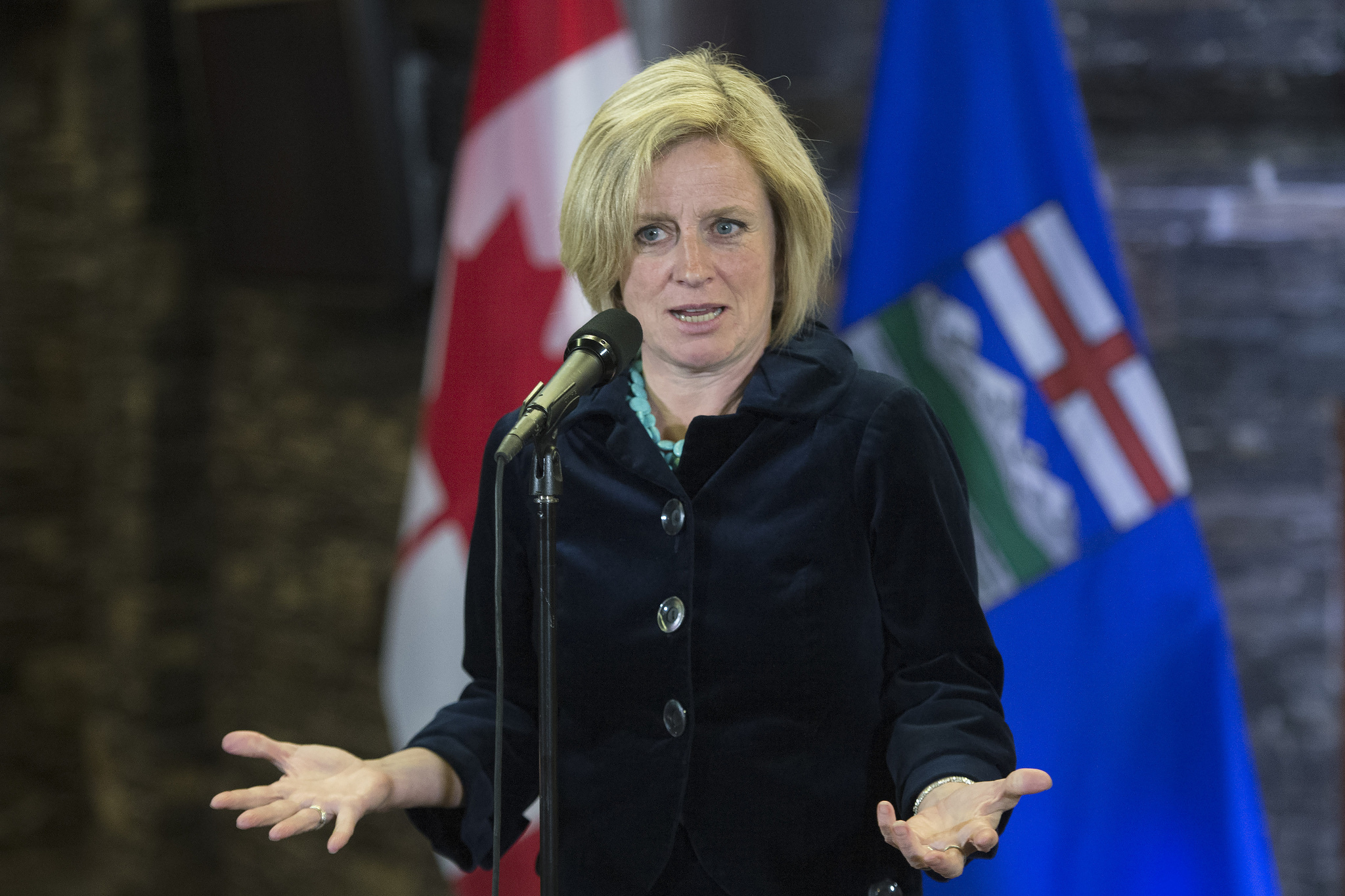Like this article? rabble is reader-supported journalism. Chip in to keep stories like these coming.
Alberta Premier Rachel Notley won’t take no for an answer on getting a bitumen pipeline to tidewater. It’s got to be the Energy East line because other proposed oil pipelines face greater opposition. But why should provinces east of Alberta accept what the United States and British Columbia reject?
U.S. President Barack Obama killed the Keystone XL pipeline. Prime Minister Justin Trudeau effectively killed the Northern Gateway line by banning oil tankers off B.C.’s northern coast. Despite the National Energy Board approval last week to triple the capacity of Kinder Morgan’s existing pipeline to Vancouver, opposition is very strong. TransCanada’s proposed Energy East, which passes through Winnipeg, has the best chance to be built.
But would building another pipeline rescue Alberta’s oil sector, which has never pumped more oil, yet has never been in more trouble?
Jeff Rubin said Alberta’s oilsands producers lose $15 to $25 on every barrel they ship. An Energy East pipeline to New Brunswick will not make the oil profitable. Low international oil prices are the culprit and beyond Canada’s control.
Enbridge line 9 already brings lots of western Canadian and U.S. shale oil to Quebec’s two refineries. Oil on the Energy East pipeline would be largely surplus to their needs. It is mainly an oilsands export line. Mark Sherman, plant manager at the Irving oil refinery in St. John, New Brunswick, said the Energy East line would send “way more than we would ever use at this refinery, so the bulk of it would all be exported.”
Premiers in Alberta and Saskatchewan are stuck on yesterday’s problem. In 2013-14, the North American (WTI) oil price was much lower than the international (Brent) oil price due to oil’s lack of access to tidewater and a 40-year U.S. ban on oil exports.
Neither hold today. Washington now allows oil exports and Alberta’s oil gets the international oil price despite Obama’s high-profile rejection of TransCanada’s Keystone XL pipeline. Pipelines to the U.S. Gulf coast were completed, ending oil’s bottleneck at Cushing, Okla.
Current pipelines to the U.S. Gulf coast have sufficient spare capacity because the international oil price crash mothballed much of Alberta’s future oil output.
Almost half the oil projects cancelled in the world last year were in Alberta. Peter Tertzakian, a prominent Calgary energy economist, says none of the 17 major oilsands projects withdrawn in the past 18 months will likely revive even if prices rebound.
Bitumen is a high-cost, marginal product that commands a low price because it’s inferior oil. It has high viscosity (stickiness) and high sulphur content. It costs more to refine and transport. Building the Energy East pipeline won’t change any of that.
The era of oil is nearing its end. Until last year, OPEC and Big Oil assumed oil in the soil would grow in value. They’re beginning to realize it may be less valuable in the future. That’s why Saudi Arabia announced Vision 2030 to wean the kingdom off oil and is selling so much oil today even though that holds down oil prices.
The combination of factors will likely reduce oil demand — rising vehicle fuel efficiency, the ending of gasoline subsidies to consumers in OPEC countries, growing gasoline carbon taxes, and cheaper batteries leading to a shift to electric vehicles. Instead of peak oil, experts now point to peak demand.
Amy Myers Jaffe, a leading oil expert, predicts world oil use will fall below 80 million barrels a day by 2040, 20 per cent lower than today.
If true, prices will decline, spelling disaster for Alberta’s oilsands boosters. The province’s new oilsands projects need prices above $68 to $100 a barrel to be profitable.
If Alberta’s oilsands fail to expand, there will be no need for more oil takeaway capacity. Even if Ottawa and the premiers of the five provinces east of Alberta support the Energy East pipeline, it would not help Alberta’s economy.
Alberta’s government and Big Oil are on the wrong side of history. They are betting the age of carbon fuels will continue for decades. That’s unlikely. Alberta must join the international transition to a low-carbon future, or be left behind in a “fossil fuel belt” of abandoned oil wells and tar ponds resembling the U.S. “rust belt” and coal states.
Alberta has an alternative. Its future lies in learning that a unit of carbon energy saved creates more jobs than a unit of carbon energy dug up, burned and emitted.
Alberta should not bank on another oil boom. If it happens, it will only be followed by a permanent bust.
Gordon Laxer is the author of After the Sands: Energy and Ecological Security for Canadians (excerpt) and the founding director of Parkland Institute at the University of Alberta.
This article originally appeared in the Winnipeg Free Press.
Like this article? rabble is reader-supported journalism. Chip in to keep stories like these coming.
Image: Flickr/Premier of Alberta



